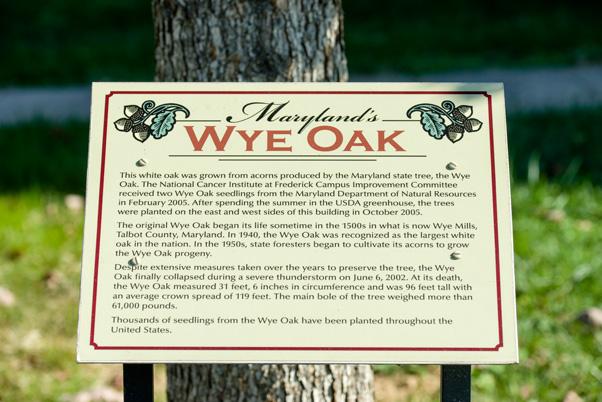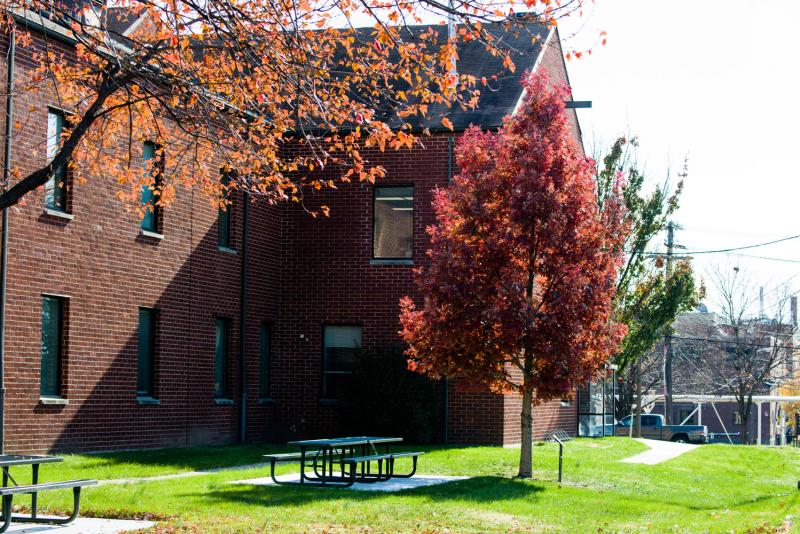The Wye Oak tree—a towering white oak that lived for nearly 500 years in Talbot County, Maryland—was the nation’s largest white oak tree as well as the State Tree of Maryland until it was destroyed in a severe thunderstorm in 2002.
Today, several clones of the Wye Oak, as well as a few of the Wye Oak’s progeny, still exist—including two on the NCI at Frederick campus.
One was nearly destroyed in the derecho storm that ravaged the mid-Atlantic in the summer of 2012, but it has since been nursed back to health and is making a comeback. The other offspring is growing strong—and, with proper upkeep, both could live to be nearly as old as their forebear.
“Saving the trees for me represents a love of nature and our collective commitment to preserve and protect life in all its forms,” said Mike Addington, manager, Operations and Maintenance, Facilities Maintenance and Engineering Directorate.
Addington runs the Campus Improvement Committee, which cares for the trees on the NCI at Frederick campus. His team is always busy mulching, trimming, pruning, watering, and feeding the trees, as well as applying herbicide and pesticide where necessary.
“The Campus Improvement Committee considers our large and diverse tree population to be our greatest asset,” Addington said.
The NCI campus is home to a large variety of trees, both deciduous and coniferous, though none quite as famous as the Wye Oak offspring. Species include several varieties of oak and maple, cherry, poplar, magnolia, crabapple, arborvitae, Leyland Cyprus, holly, sweetgum, dogwood, white pine, black pine, Douglas fir, spruce, hemlock, boxwood, locust, pear, cedar, ash, sycamore, ginkgo, mimosa, crepe myrtle, and beech.
Next time you are walking down Wood Street, look next to Building 560. You’ll see one of the Wye Oaks as well as a plaque describing this piece of Maryland history. To see the other tree being nursed back to health, look toward Building 560 along Miller Drive.





